Alright folks, let’s talk shoulders. Specifically, those glorious caps that scream strength and athleticism – the lateral deltoids. As a coach who’s spent countless hours in the trenches (both training myself and guiding clients), I can tell you this: developing those side delts is the game-changer for that coveted V-taper. Lateral deltoid exercises target the middle head of your shoulder muscle, and when done right, they sculpt width like nothing else. Think dumbbell lateral raises, upright rows, cable work – these aren’t just exercises; they’re your blueprint for broader shoulders. But trust me, I’ve seen too many people spin their wheels. Let’s cut through the noise and get you results.
Tips for Maximizing Lateral Deltoid Muscle Exercises
- Focus on Proper Form: Non-Negotiable. Seriously, this is where most gains are lost. Swinging weights or using momentum takes tension OFF the lateral delt and puts it ON your joints and traps. I learned this the hard way early on, battling shoulder niggles. Move deliberately. If you can’t control the weight, it’s too heavy. Your lateral delt should feel like it’s doing the work, not just along for the ride.
- Use a Full Range of Motion (ROM): Half-reps equal half-results. On lateral raises, lower the dumbbells fully under control until they almost touch your sides, then raise them to at least shoulder height. On presses, get a good stretch at the bottom and full lockout (safely). Maximizing ROM maximizes muscle fiber recruitment.
- Embrace Progressive Overload: The Growth Principle.
- Adding a small amount of weight (even 1lb increments matter long-term).
- Doing 1-2 more reps with the same weight.
- Adding an extra set.
- Shortening rest periods slightly.
- Vary Your Exercises & Angles: Don’t just do dumbbell laterals forever. Rotate in cables (different tension curve), incline W-raises (different angle), upright rows (different movement pattern). This hits the muscle fibers slightly differently and prevents plateaus. My shoulder days always mix 2-3 different lateral delt movements.
Key Lateral Deltoid Muscle Exercises
Here’s exactly how I teach these exercises to my clients—step by step, emphasizing the details that make or break lateral delt activation:
1. Dumbbell Lateral Raise
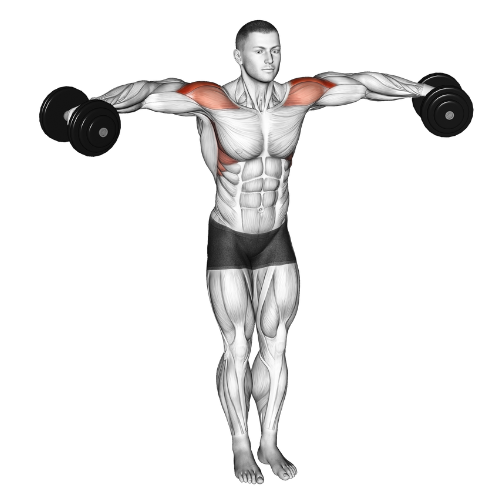
- How to Do:
- Stand tall, feet shoulder-width, knees slightly bent. Hold light-to-moderate dumbbells at your sides.
- Palms face your thighs. Maintain a slight, fixed bend in your elbows (don’t lock or swing them).
- Crucial Start: Lean your torso forward slightly at the hips (about 10-15 degrees). Brace your core and lock your torso in this position.
- Initiate the lift by leading with your elbows, raising the dumbbells directly out to your sides (not forward, not backward).
- Lift until your arms are parallel to the floor (or just below if you feel shoulder pinch). At the top, rotate your wrists slightly so your pinky finger is higher than your thumb (like pouring water).
- SQUEEZE your lateral delt hard at the top position.
- Slowly lower the weights back down with strict control, resisting gravity all the way. My Coaching Note: “No momentum! If you don’t feel the burn right here (pointing to side delt) by rep 8, check your form or drop the weight.”
2. Barbell Upright Row

- How to Do:
- Stand holding a barbell with an overhand grip. Place your hands inside shoulder-width (typically 8-12 inches apart).
- Let the bar hang straight down in front of your thighs. Stand tall: chest up, shoulders pulled back and DOWN (depress scapulae!), core tight.
- Initiate the pull by driving your elbows high and out to the sides. The bar should move straight up along the front of your body.
- Focus ONLY on lifting your elbows as high as possible. Stop when the bar reaches just below chin level OR when your elbows are slightly above shoulder height – whichever comes first without shrugging your traps.
- Pause briefly at the top, squeezing your shoulders.
- Slowly lower the bar back down along the same path with full control. My Warning: “Wider grips wreck shoulders. Narrow grip, elbows high, stop before the shrug! I’ve seen too many guys ignore this and pay the price.”
3. Rear Delt Row
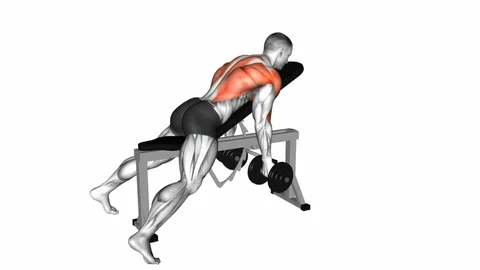
- How to Do:
- Stand holding light dumbbells, feet shoulder-width.
- Hinge aggressively at your hips, pushing your glutes back. Keep your back FLAT (not rounded!) until your torso is nearly parallel to the floor.
- Let the dumbbells hang straight down directly under your shoulders. Palms face each other (thumbs forward). Maintain a slight bend in elbows.
- Keeping your torso completely STILL, raise your arms straight out to your sides, leading with your elbows.
- Focus on squeezing your shoulder blades together and driving your elbows up and back towards the ceiling behind you.
- Lift until your arms are roughly parallel to the floor. Squeeze the muscle between your shoulder blade and the side of your arm (rear/lateral tie-in) HARD.
- Slowly lower the dumbbells back to the start position with control. My Experience: “This move single-handedly fixed my rounded shoulders and eliminated that nagging upper back ache. Feel it wrapping around the side.”
4. Cable Lateral Raise
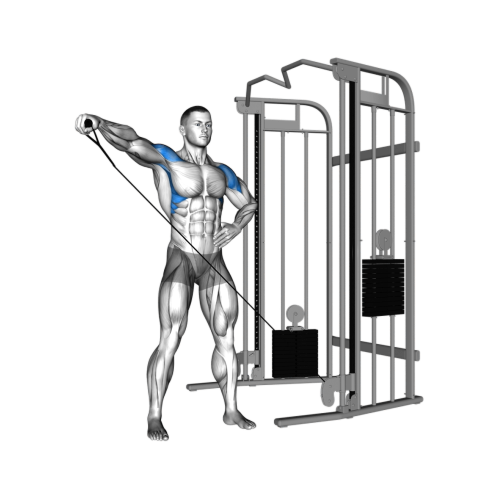
- How to Do:
- Stand sideways to a low cable pulley machine. Attach a single-handle D-grip.
- Grab the handle with your outside hand (the hand farthest from the machine). Use a neutral grip (palm facing your body). Step slightly away to create tension.
- Position your feet staggered for balance. Stand tall, slight bend in the working arm’s elbow. Keep your non-working hand on your hip or the frame for stability.
- Initiate the raise by leading with your elbow, lifting your arm across your body directly out to the side. Fight the cable’s natural tendency to pull your hand forward; focus on a pure lateral movement.
- Lift until your arm is parallel to the floor or slightly higher. Squeeze the side delt intensely at the top.
- Slowly lower the handle back to the start position, maintaining constant tension on the muscle – never letting the weight stack rest. Why I Love It: “That unrelenting tension from the cable? That’s the secret sauce for growth you don’t get with dumbbells. The burn tells the story.”
5. Arnold Press
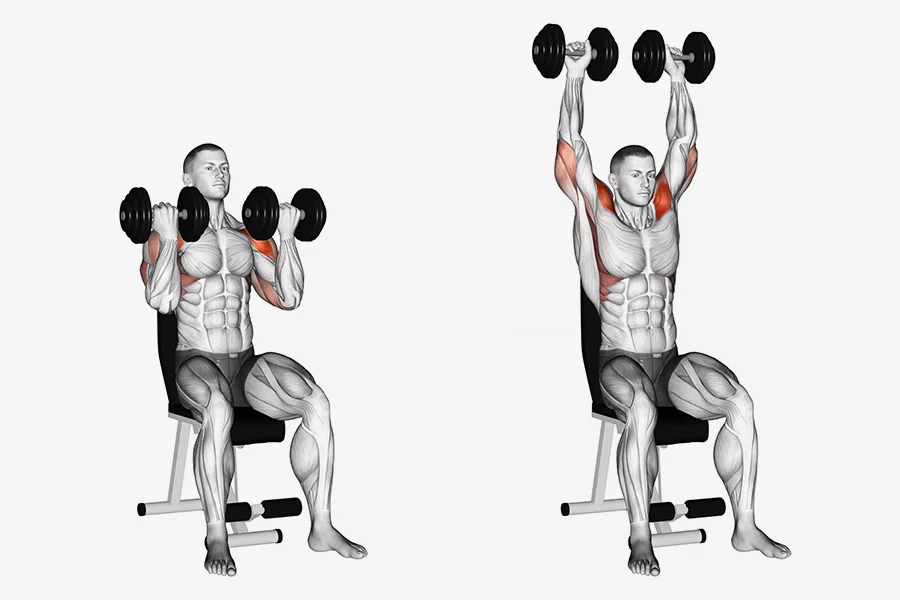
- How to Do:
- Sit on an upright weight bench, back fully supported. Hold dumbbells at shoulder height in front of you.
- Start Position: Palms facing you (thumbs pointing towards each other, like the finish of a curl), elbows slightly in front of your torso.
- Initiate the press overhead. Simultaneously, rotate your wrists outward as you press.
- By the time your arms are nearly straight overhead, your palms should be facing forward. Squeeze your delts hard at the top.
- Begin lowering the weights. Simultaneously, rotate your wrists inward as you lower.
- By the time the dumbbells return to shoulder height, your palms should be facing you again. My Tip: “The magic happens in the rotation. Don’t just press up and down – twist deliberately! That mid-range rotation is where the lateral head screams.”
6. Behind-the-Neck Press
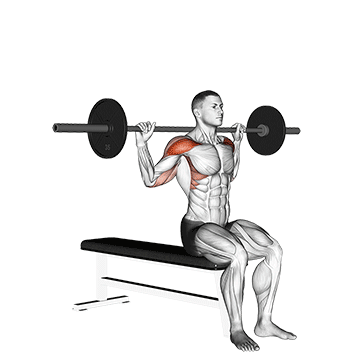
- How to Do (Only if Shoulder Mobility Allows!):
- Sit on an upright bench with back support, or stand firmly. Have a spotter hand you the barbell, or carefully unrack it.
- Place the bar securely on your upper traps behind your neck. Grip the bar wider than shoulder-width – find a position where your forearms are roughly vertical at the bottom.
- Chest up, core braced tightly, elbows pointing down and slightly forward (not flared out).
- Press the bar straight up overhead in a controlled motion. Focus on driving through the sides and rear of your shoulders.
- Lock out your elbows at the top (without hyperextending).
- Slowly lower the bar back down behind your neck to the starting position, maintaining strict control. *My Strong Caveat: “Honestly, I program this for maybe 1 in 20 advanced clients with pristine mobility. For everyone else? The risk isn’t worth the reward. That front-of-shoulder pinch people ignore? That’s trouble brewing. Stick to front presses.”*
7. Incline W-Raise
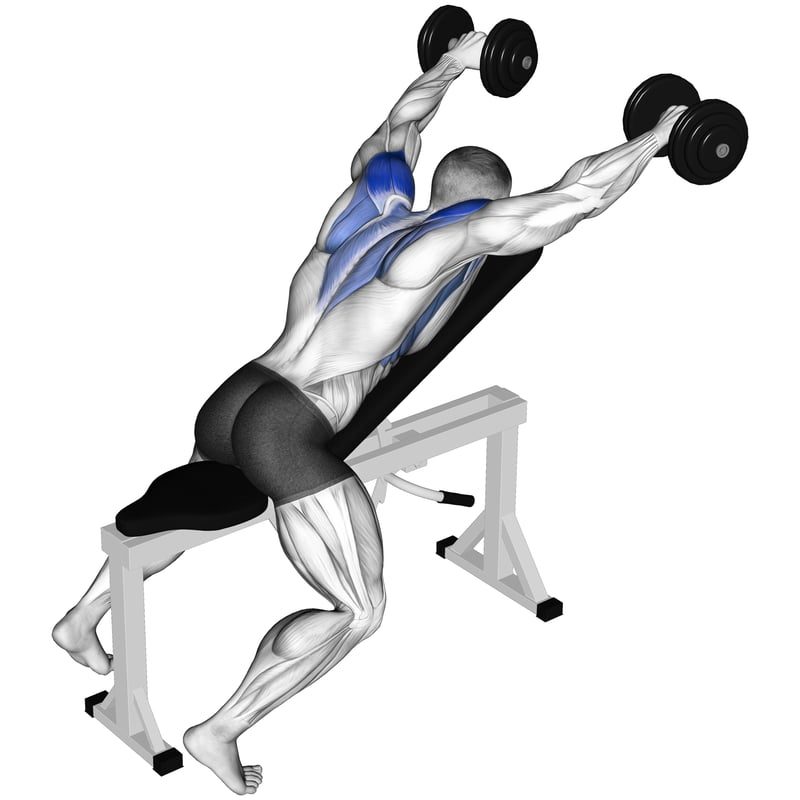
- How to Do:
- Set an incline bench to 45-60 degrees. Grab light dumbbells.
- Lie chest-down on the bench. Let your arms hang straight down towards the floor, palms facing each other (thumbs forward). Maintain a slight bend in your elbows.
- The Movement: Keeping your chest firmly pressed into the pad, raise your arms:
- Out to your sides (like a rear fly).
- AND slightly forward (about 30 degrees forward of pure lateral).
- SIMULTANEOUSLY bend your elbows, pulling your hands up towards the sides of your head.
- At the top, your body and arms should form a distinct “W” shape. Your elbows should be high, pointing towards the ceiling/rear wall.
- SQUEEZE your rear delts and the lateral delt tie-in at your upper back HARD. Imagine pinching a pencil between your shoulder blades.
- Slowly reverse the motion: straighten your elbows and lower the dumbbells back to the starting position with control. My Coaching Cue: “Think ‘elbows high, hands low’ at the top. Squeeze that upper back ‘shelf’ like you’re trying to hold a tennis ball there.”
Master these steps with laser focus, and you’ll be targeting those lateral delts like never before. Remember, precision beats weight every single time for shoulder development. Now go put this into practice!
Common Mistakes of Lateral Deltoid Muscle Exercises
External Rotation (Turning Thumbs Down): Raising the dumbbells with thumbs pointing down at the top. This often engages the front delt more and can irritate the rotator cuff.
- The Fix: Keep your thumbs pointing slightly downward or neutral throughout the lift, or even slightly upward (pinky higher than thumb) to emphasize the lateral delt. Imagine pouring water out of a jug behind you.
Leaning Back/Swinging: Using body English to heave the weight up. This turns it into a full-body momentum exercise, taking tension off the lateral delt.
- The Fix: Stand tall, core braced, back straight. Lean forward slightly at the hips (about 10-15 degrees) before you start the raise, then keep your torso absolutely rigid. Imagine being pinned against a wall behind you. Use lighter weight!
Shrugging: Elevating your shoulders towards your ears during the lift. This recruits the upper traps, stealing work from the lateral delts and often causing neck strain.
- The Fix: Consciously depress your shoulder blades down and back before you initiate the lift. Maintain that depression throughout the movement. Think “long neck.” Focus on lifting from the elbow, not the hand.
I’ve applied these exact principles – through trial lateral deltoid muscle exercises, error, and coaching hundreds of clients – to build my own shoulders and help others build theirs. It takes patience and attention to detail, but the payoff – those strong, wide, capped shoulders – is absolutely worth it. Now get out there, grab some appropriate weight, and start sculpting those boulders! Let me know how these tips work for you.
Welcome! I’m Jordan Mitchell, the dedicated editor at Leadman Fitness, where we specialize in manufacturing high-quality bumper plates, barbells, weight machines, kettlebells, and dumbbells. With a passion for fitness and a keen eye for detail, I ensure that our product information is clear, accurate, and engaging for our customers. My role involves collaborating closely with our design and production teams to highlight the innovative features and superior craftsmanship that set Leadman Fitness apart in the industry. Whether you’re a professional athlete or a fitness enthusiast, I’m here to provide you with the information you need to achieve your training goals with our top-of-the-line equipment.